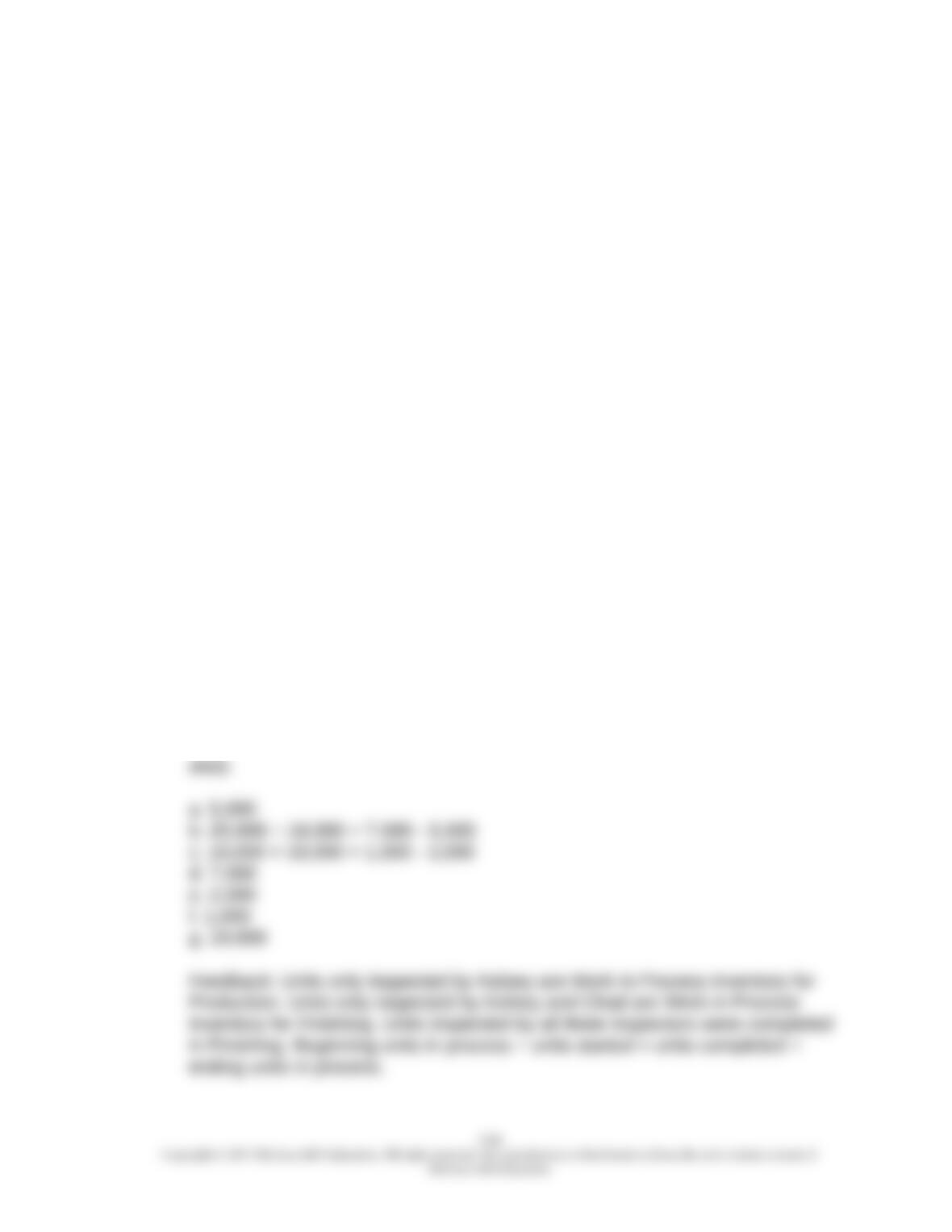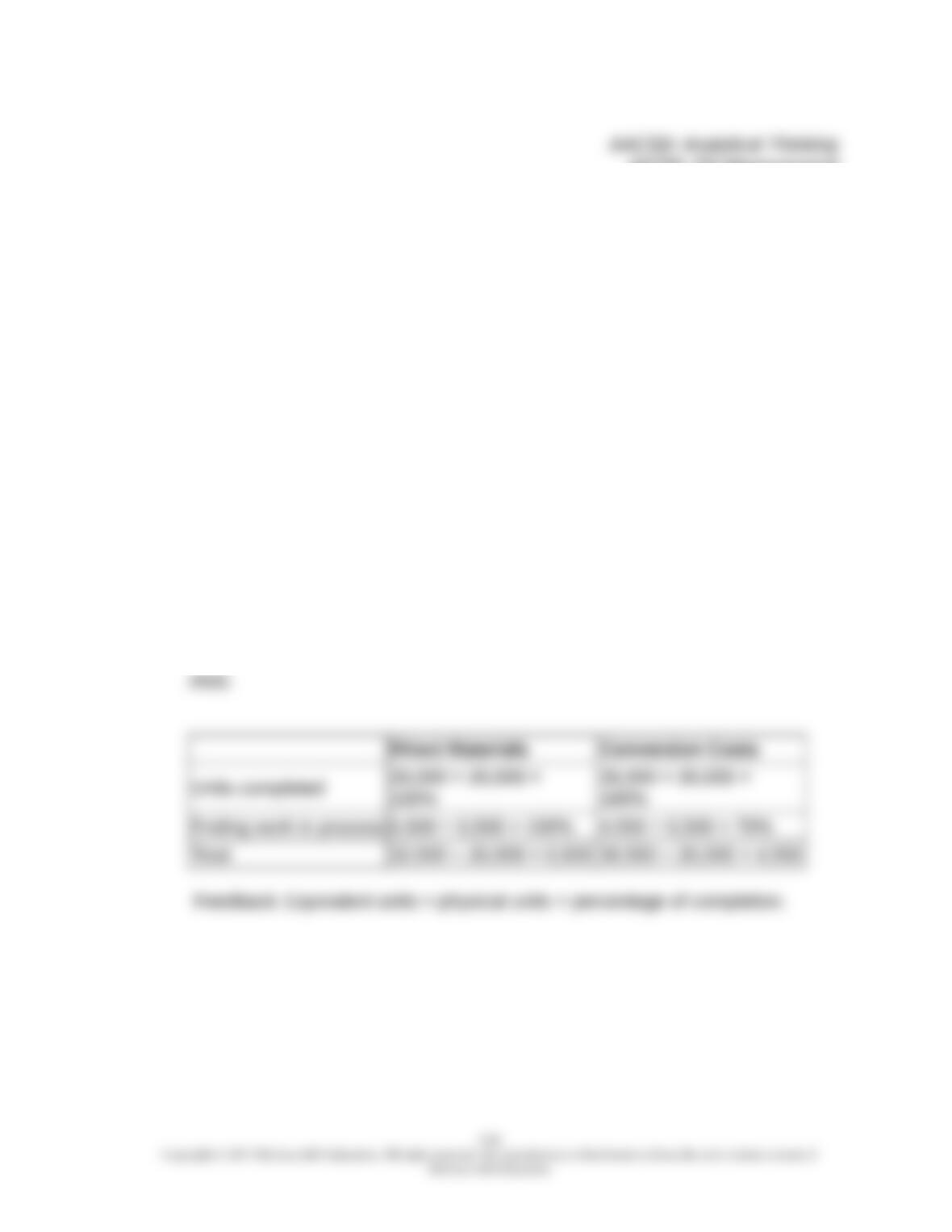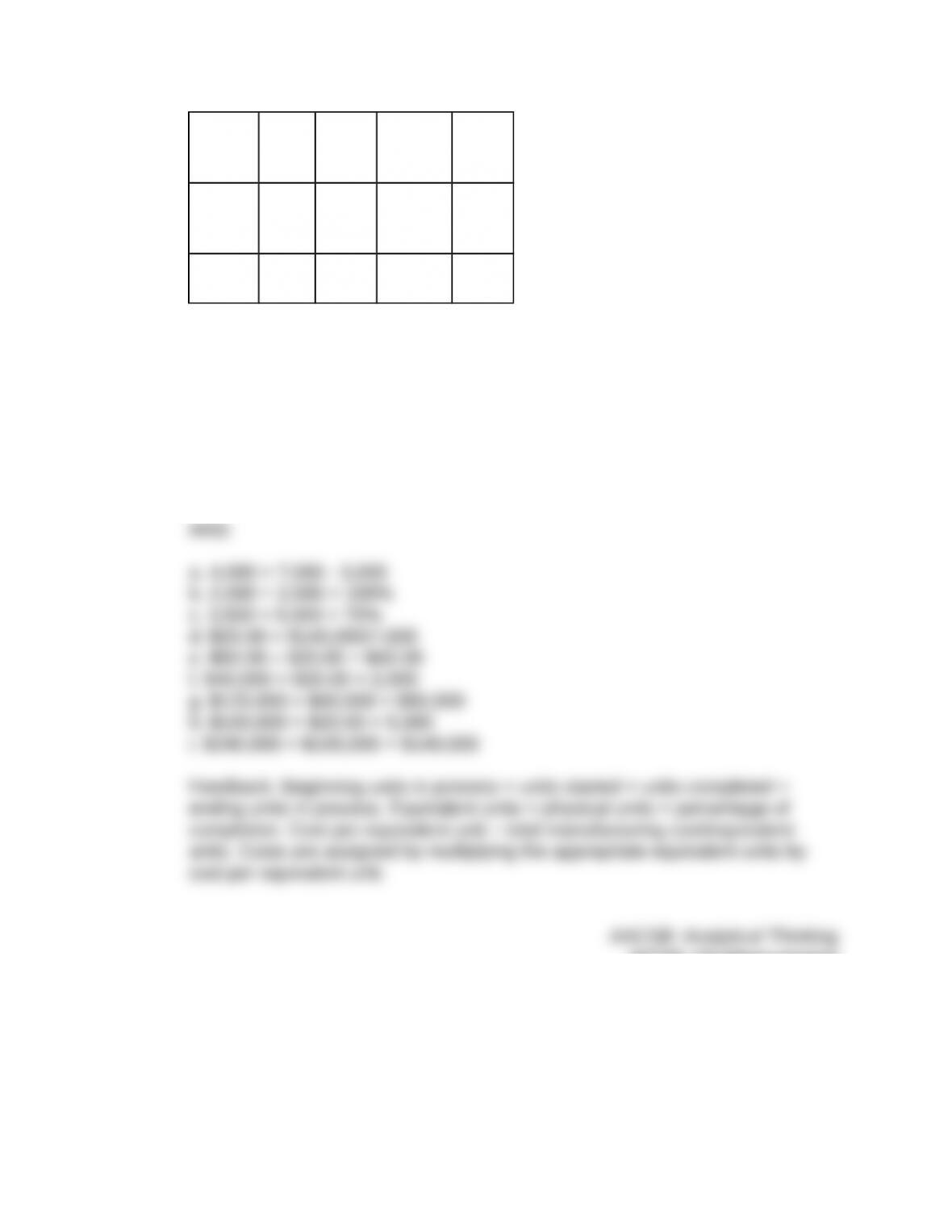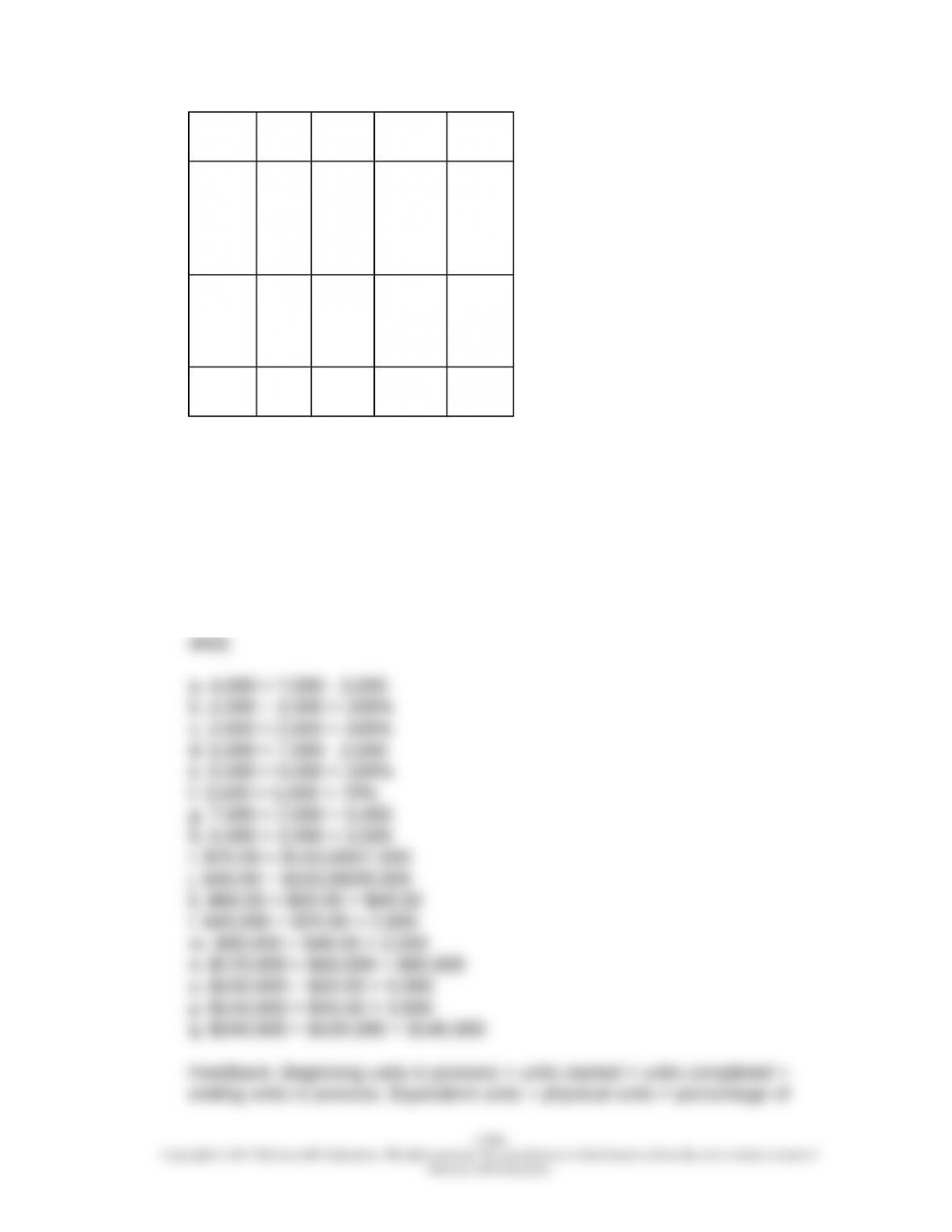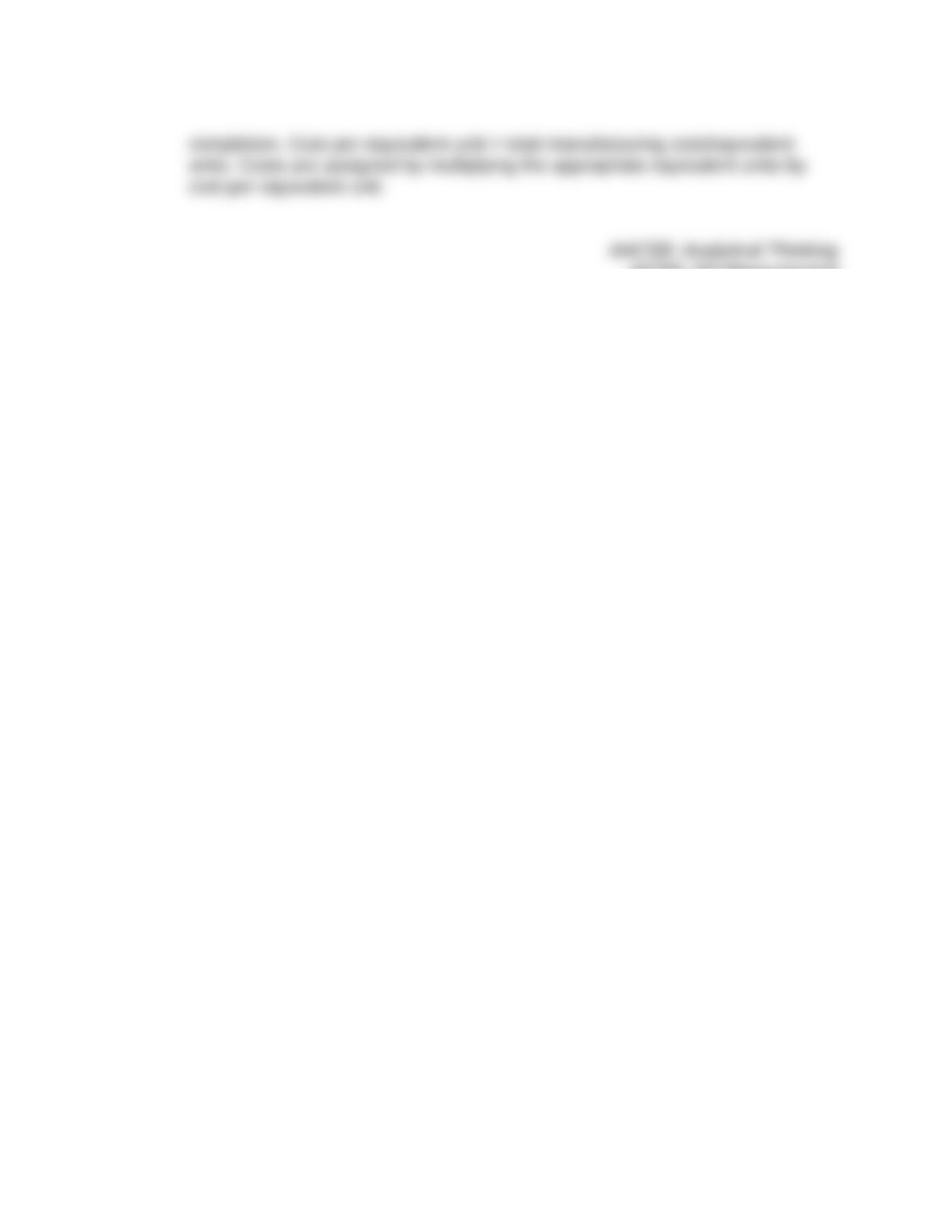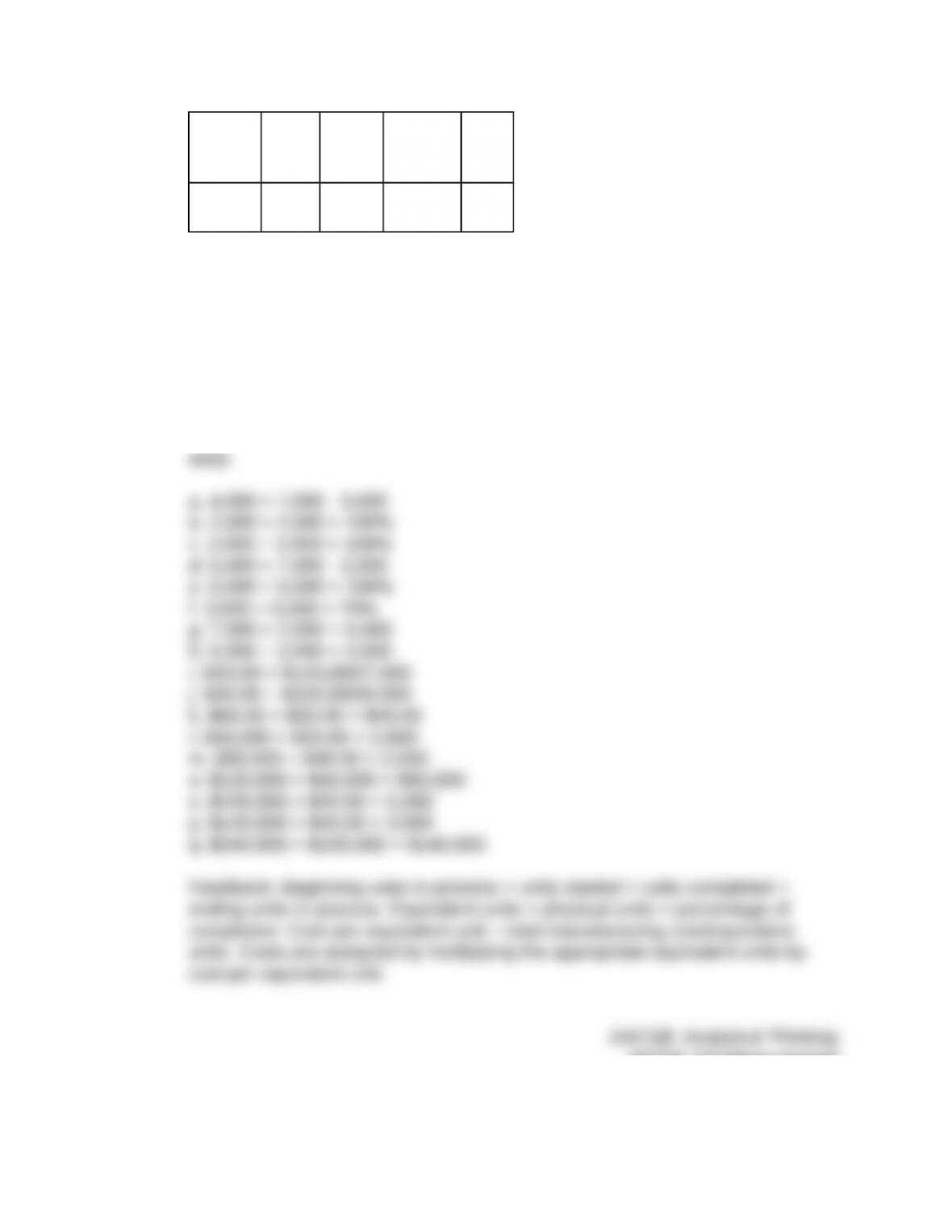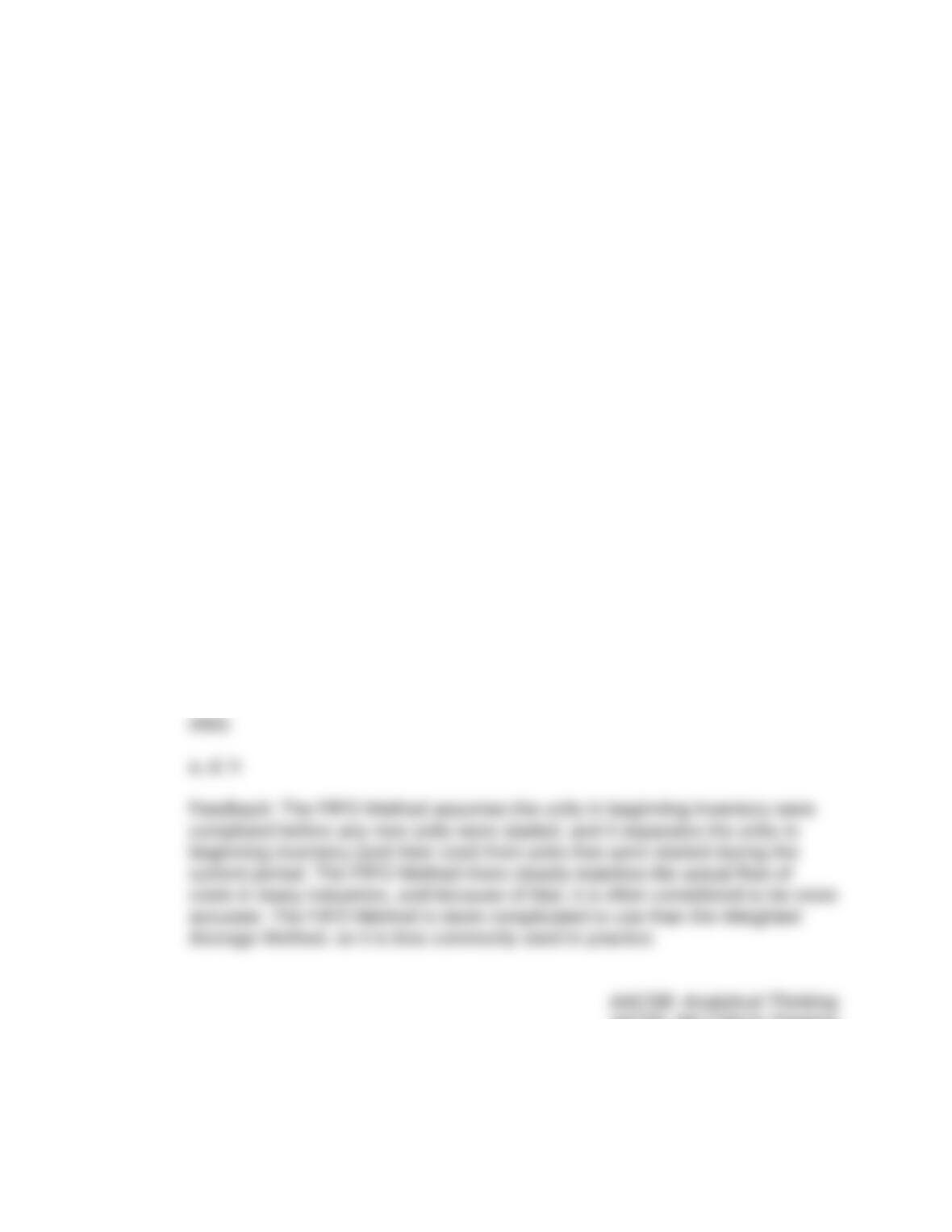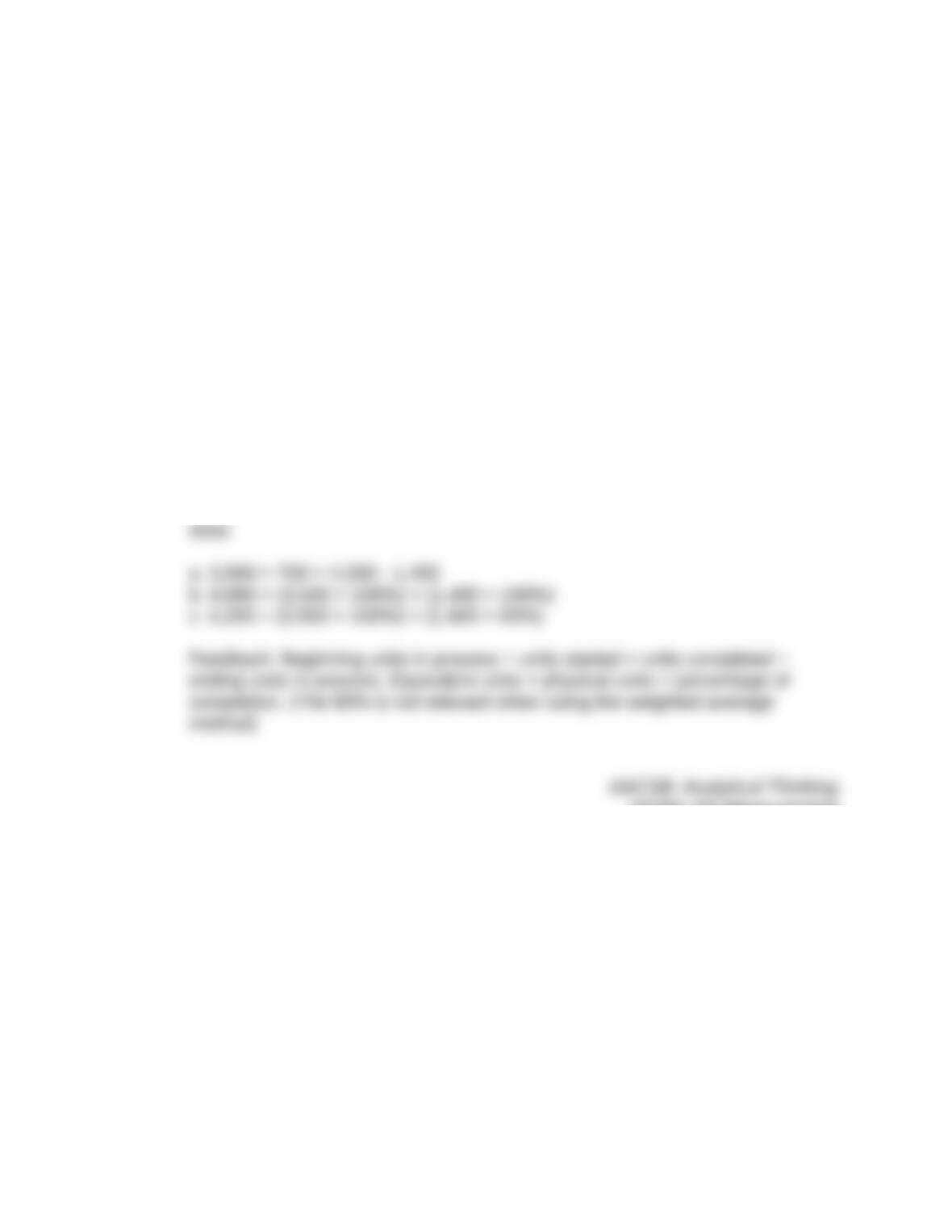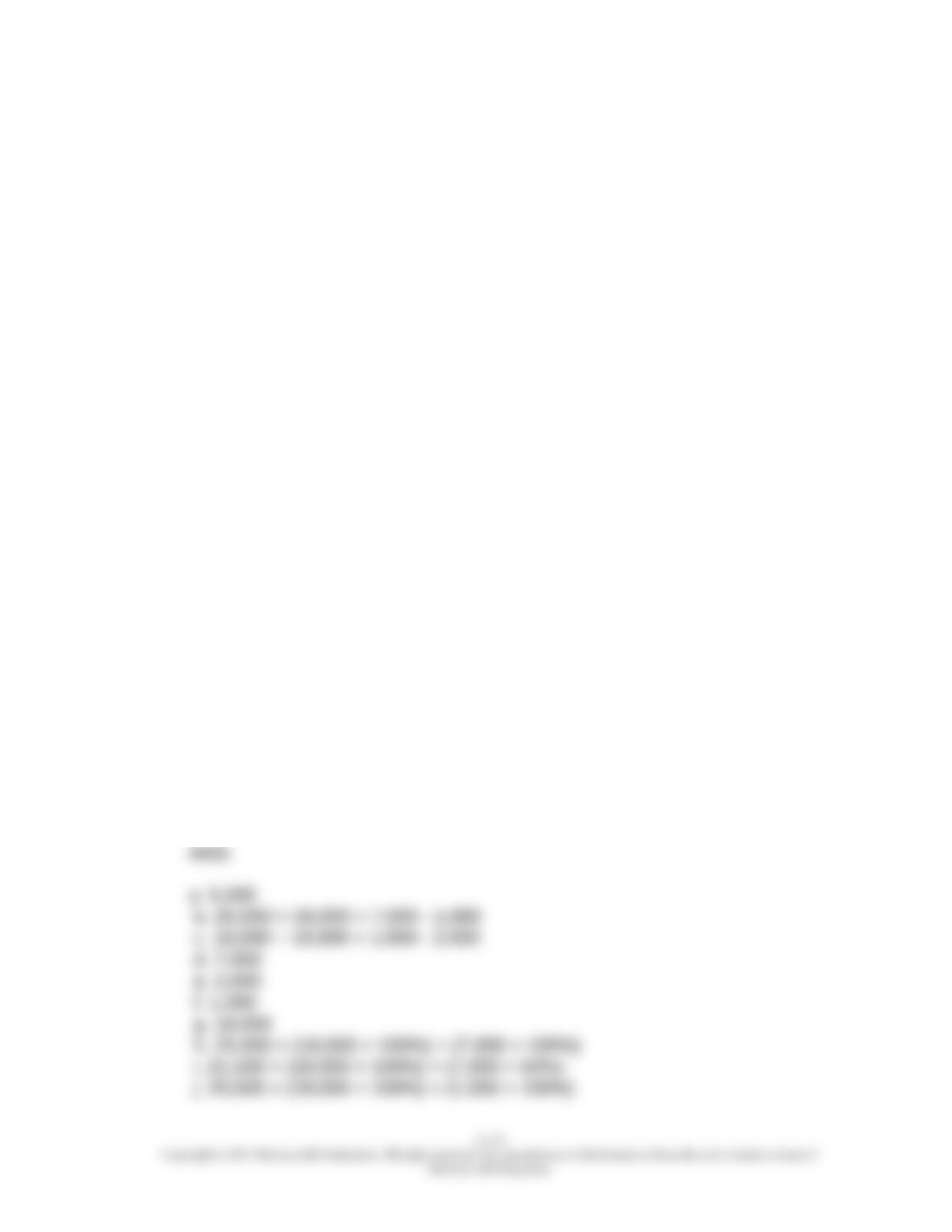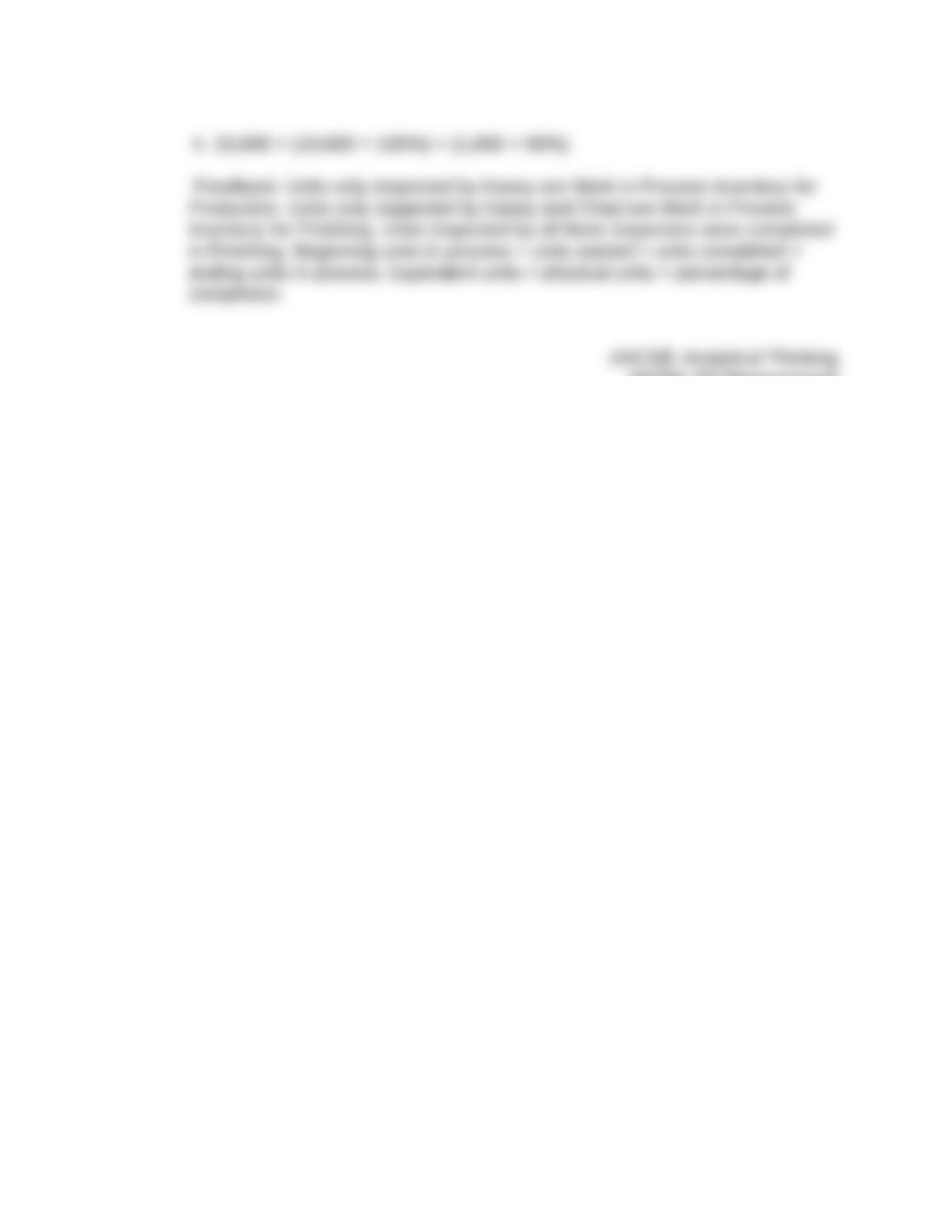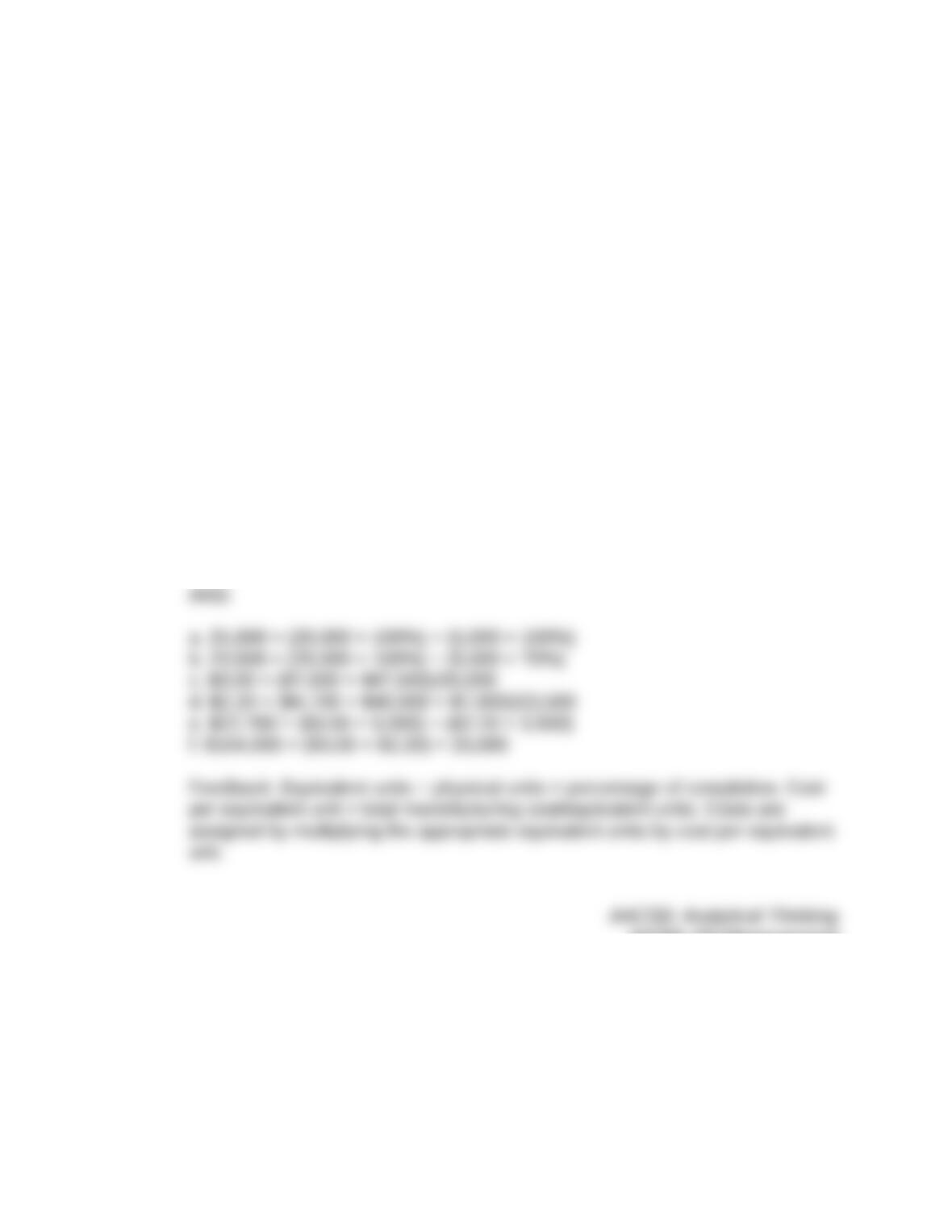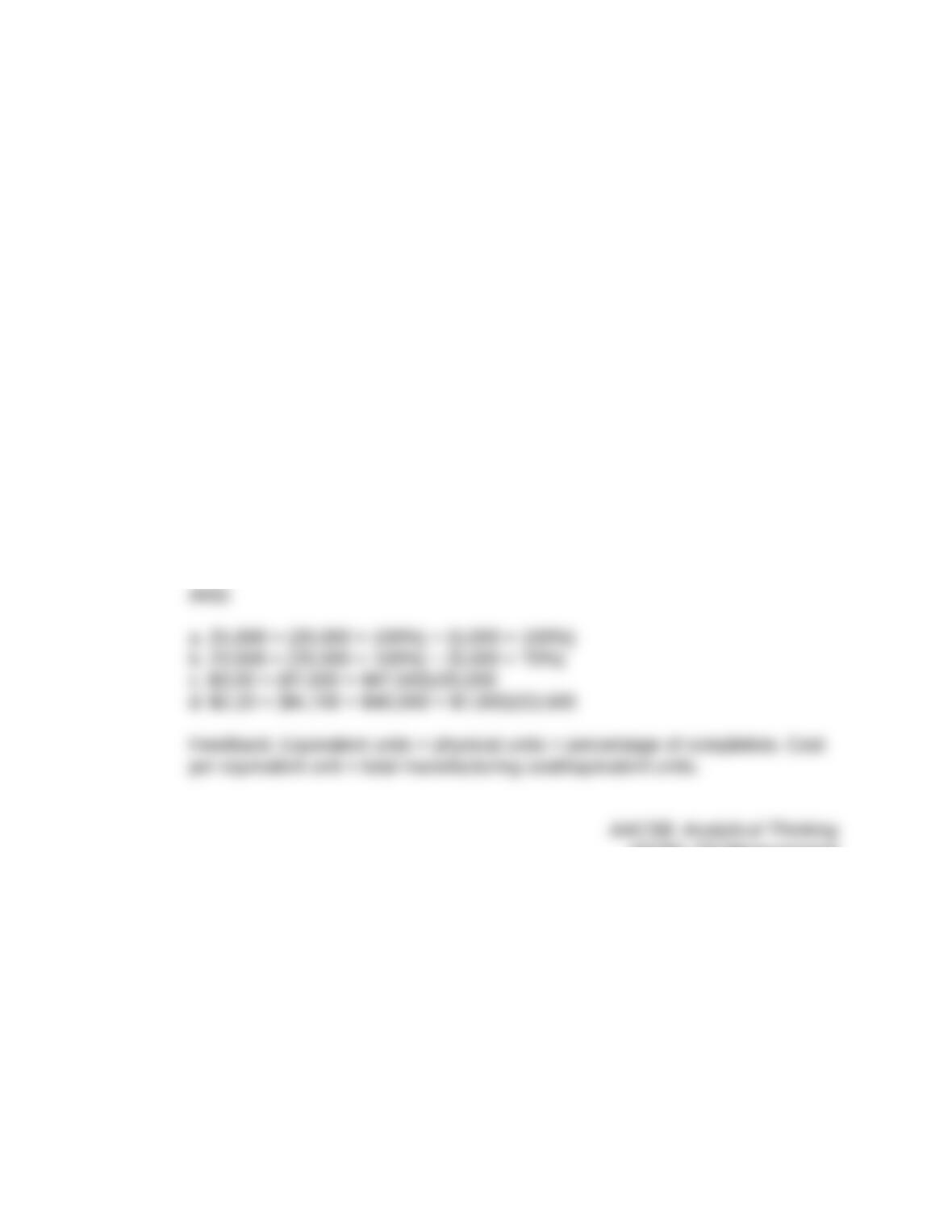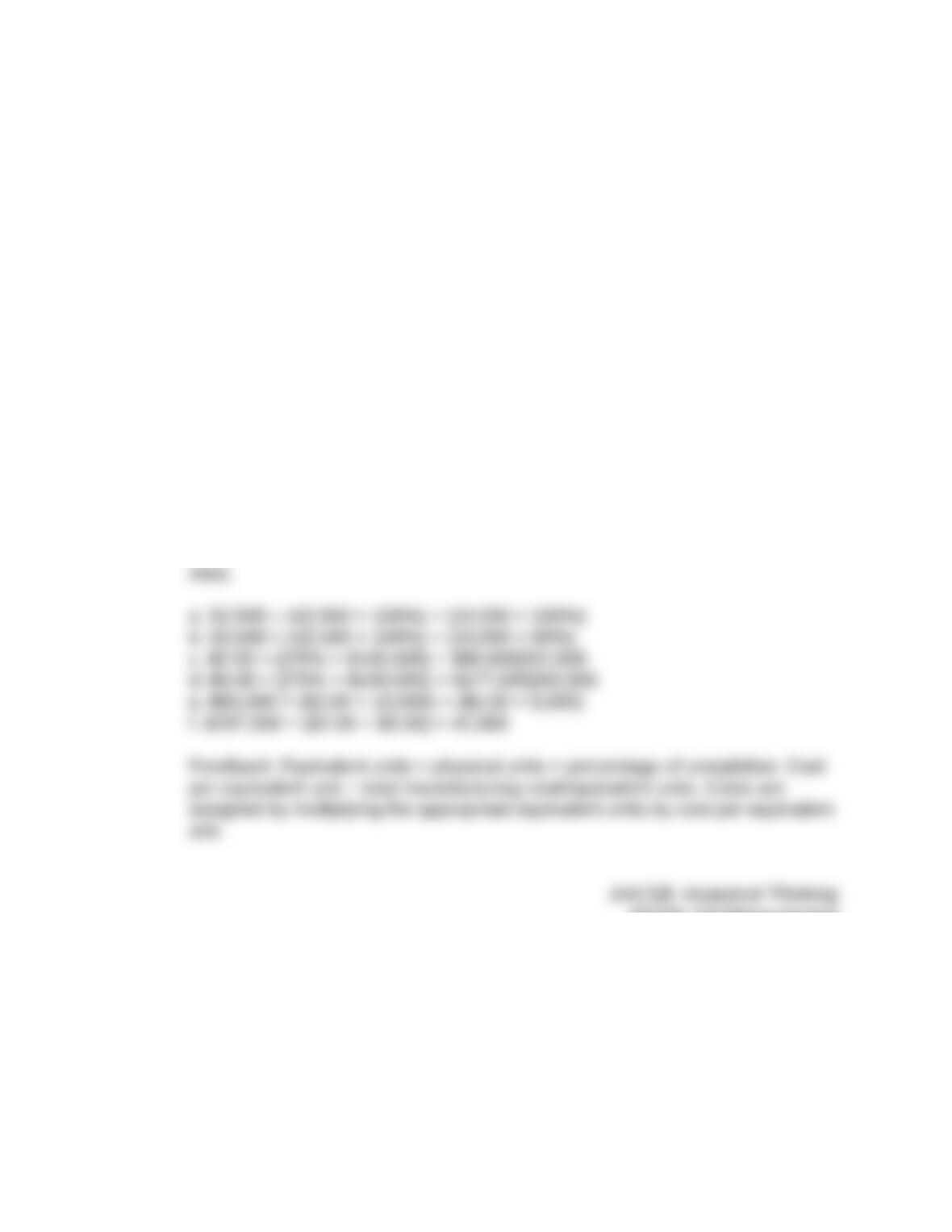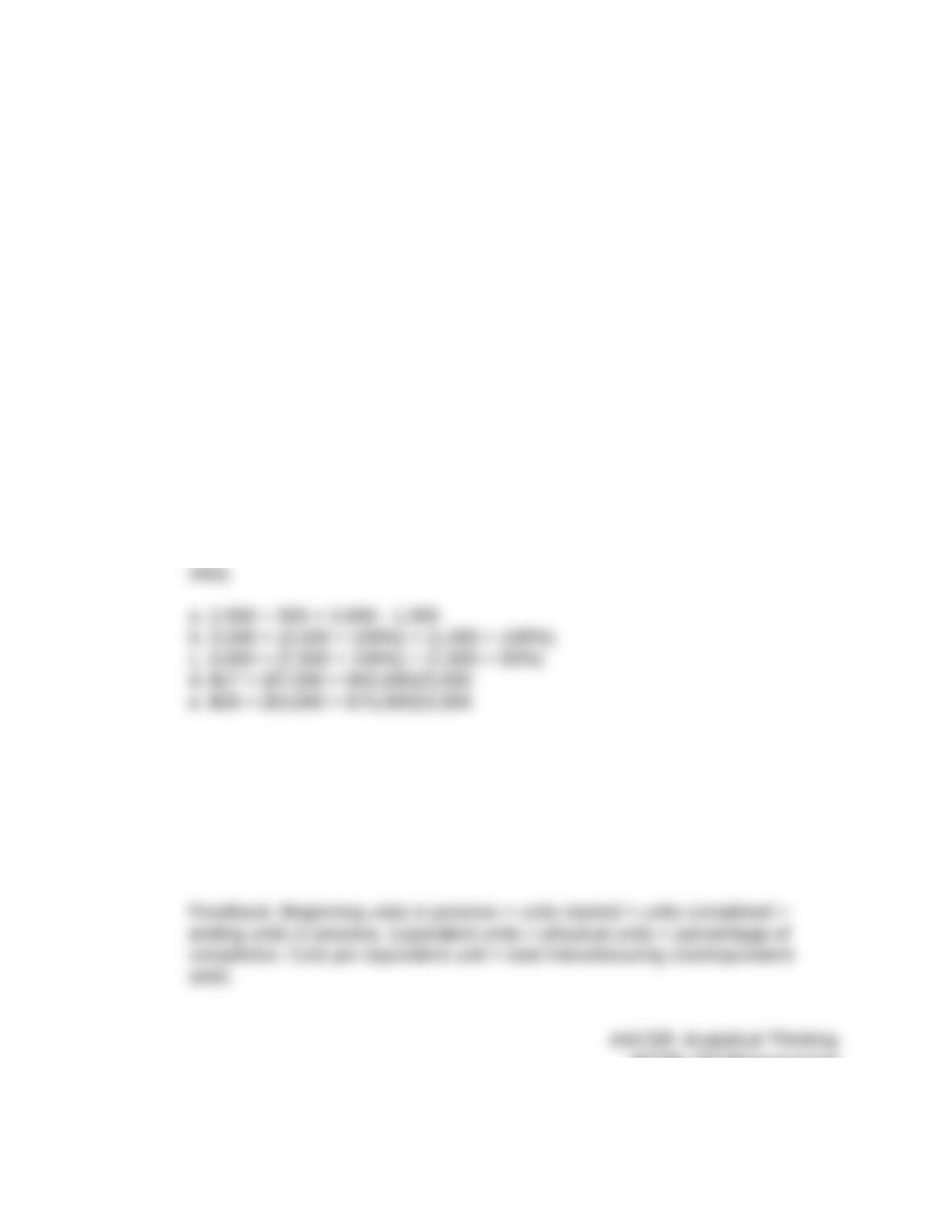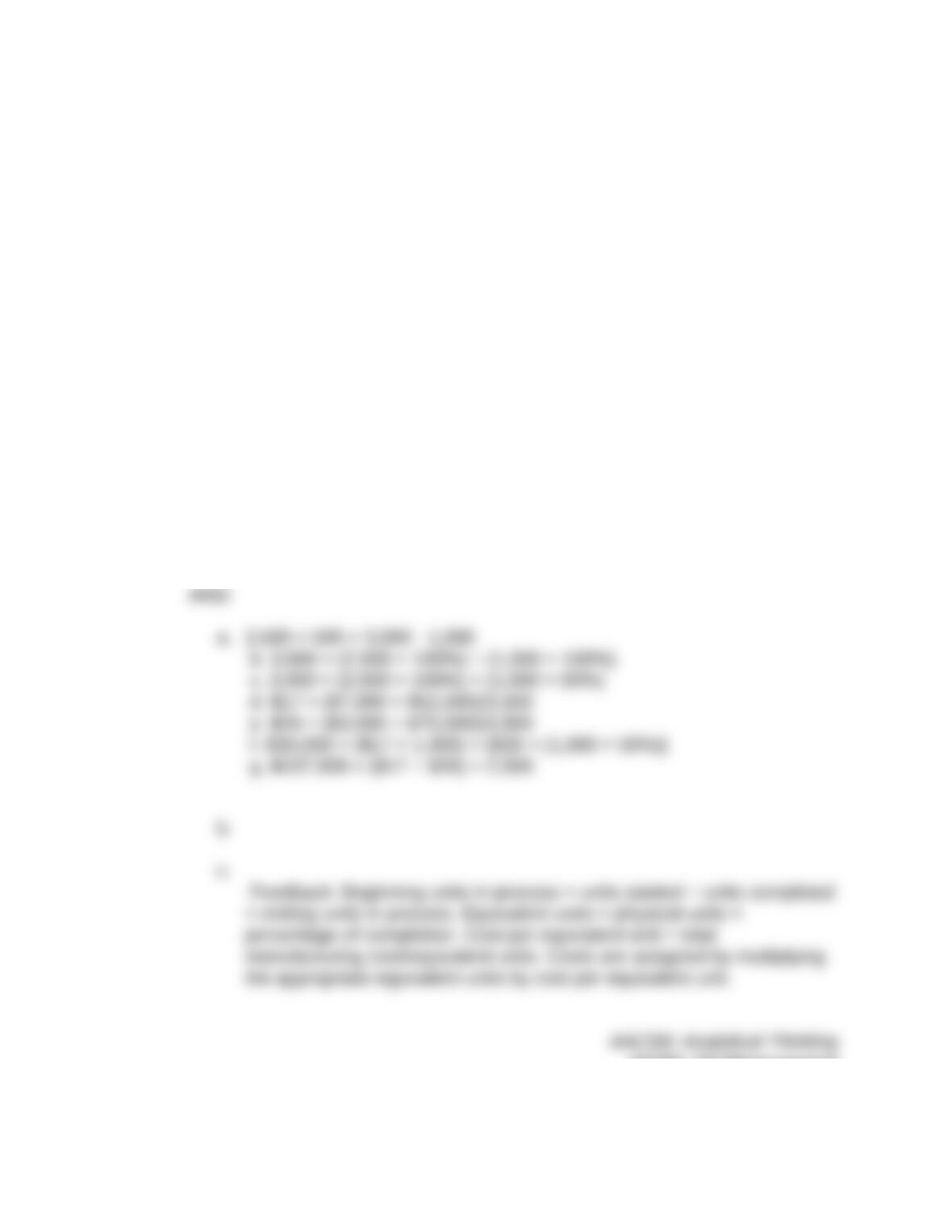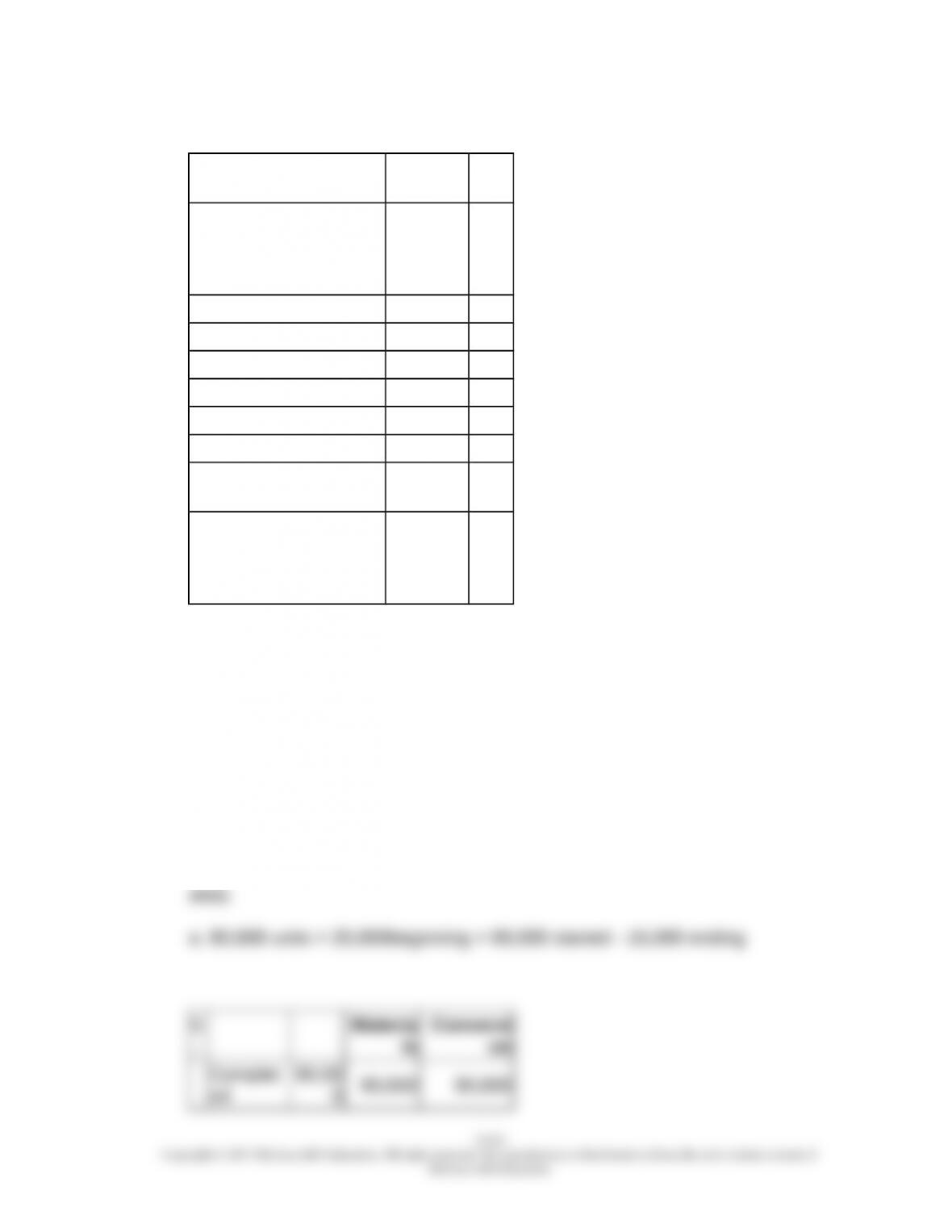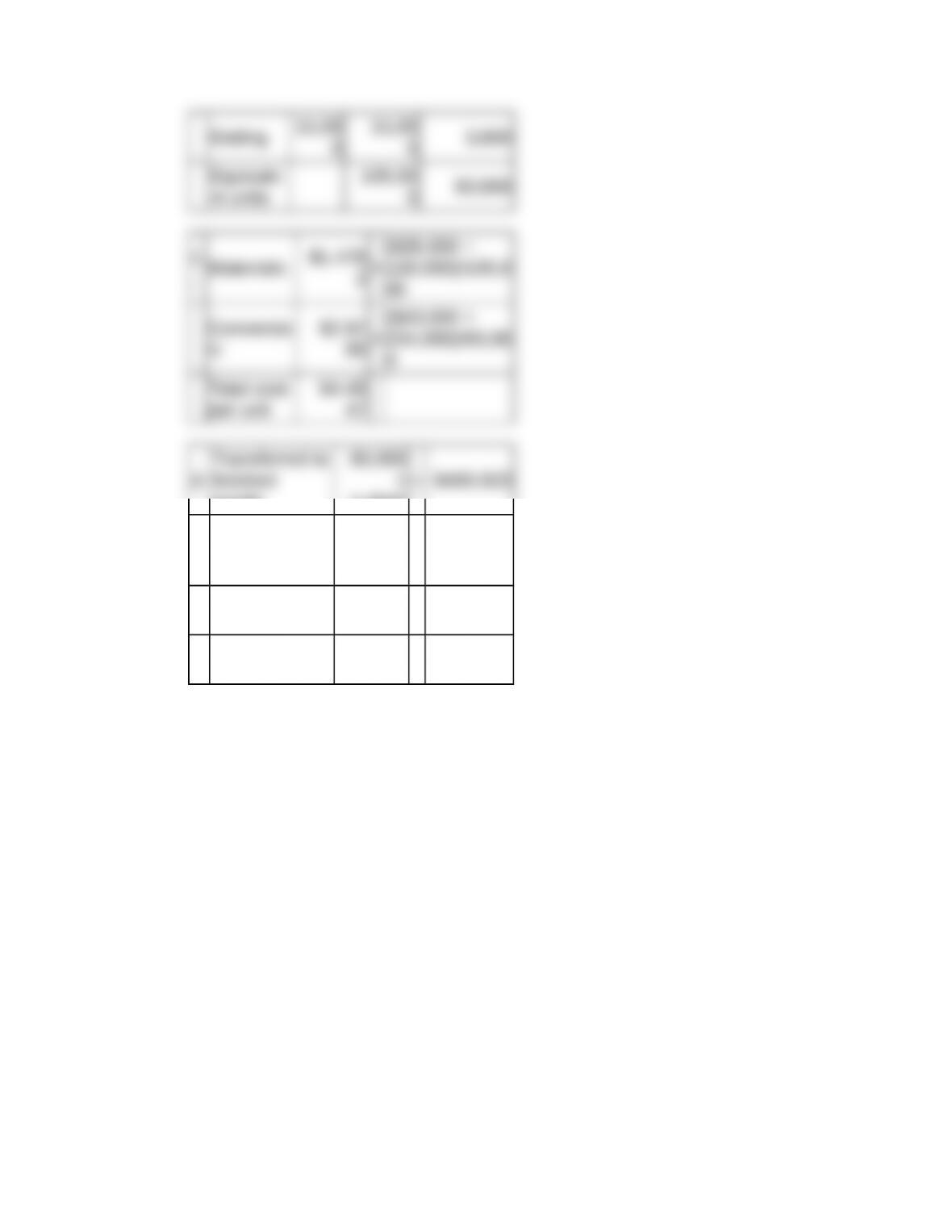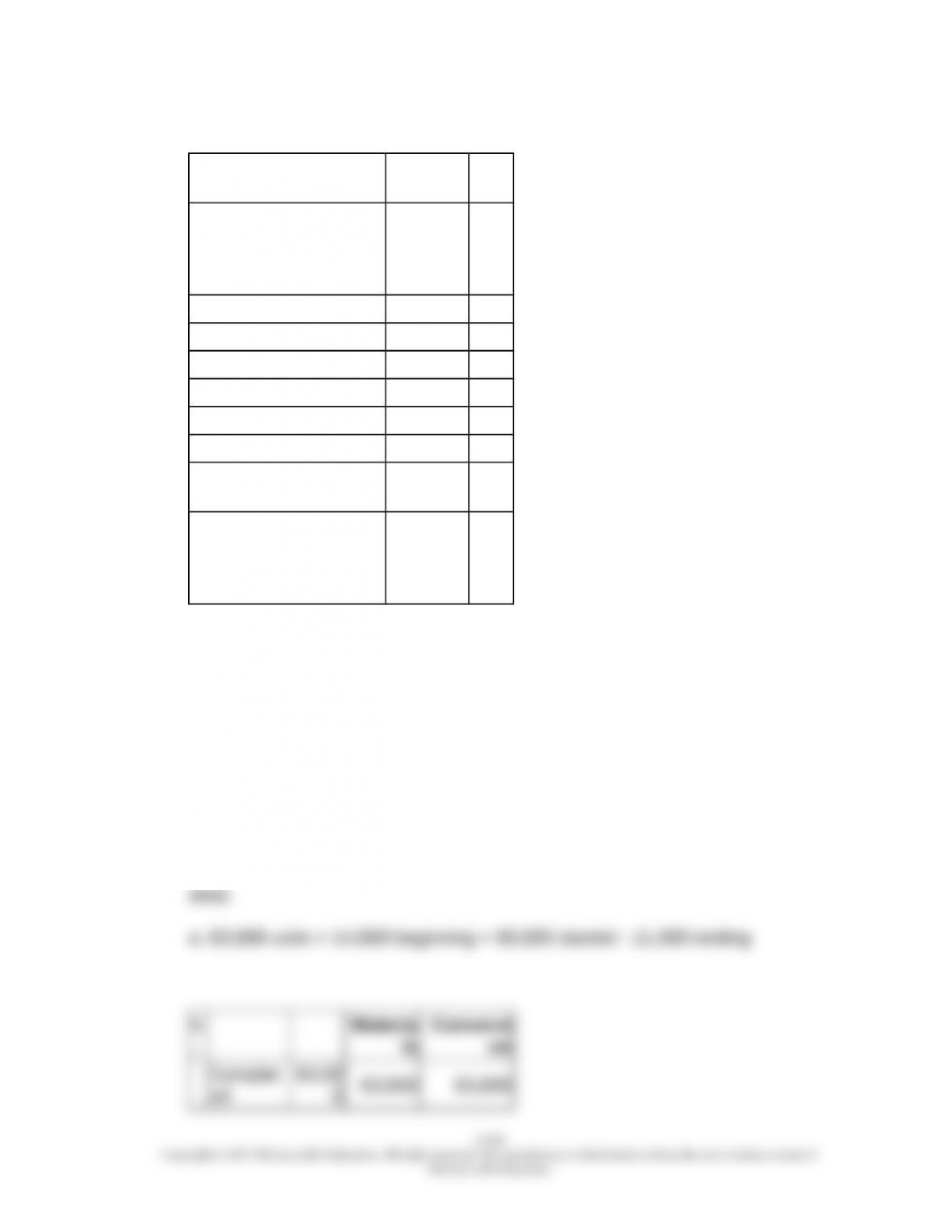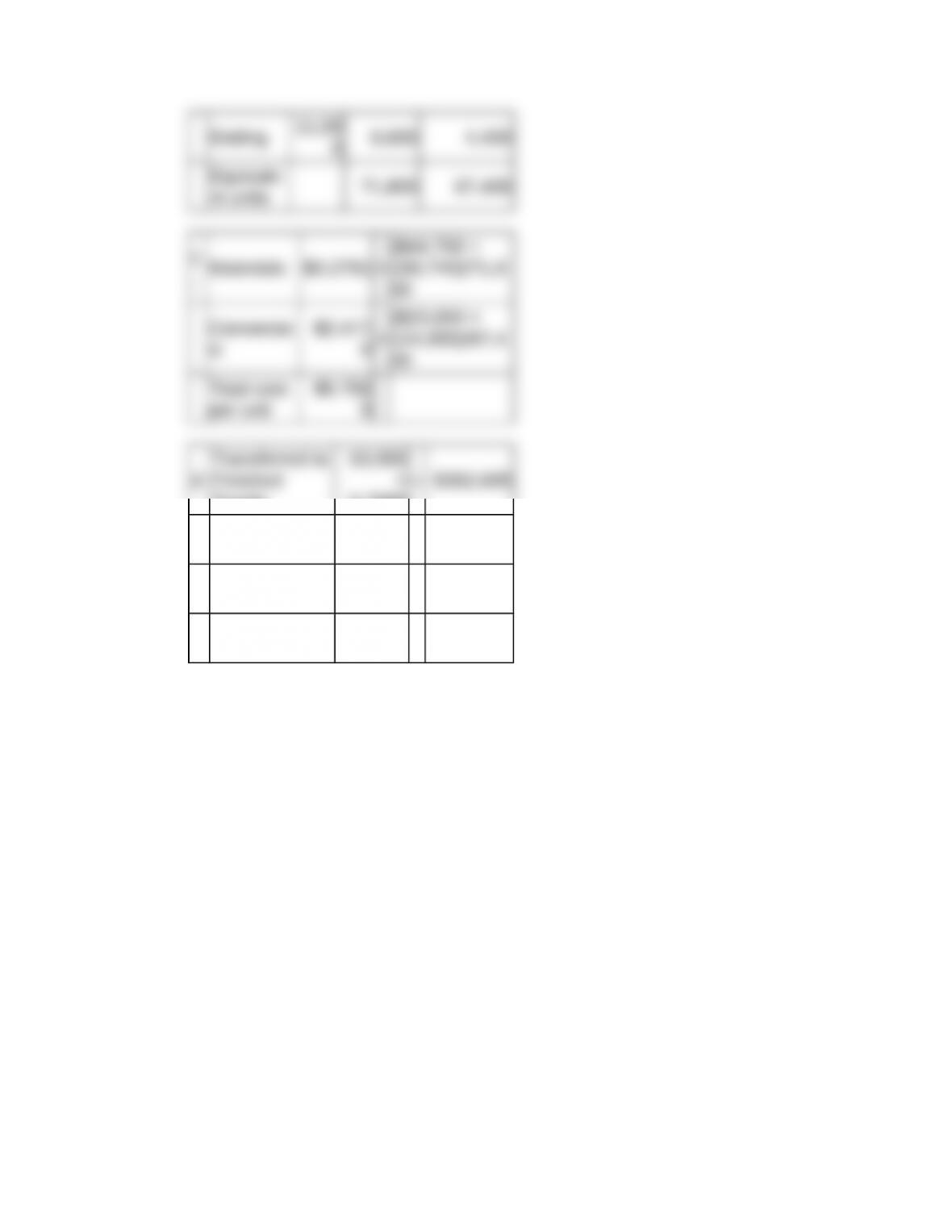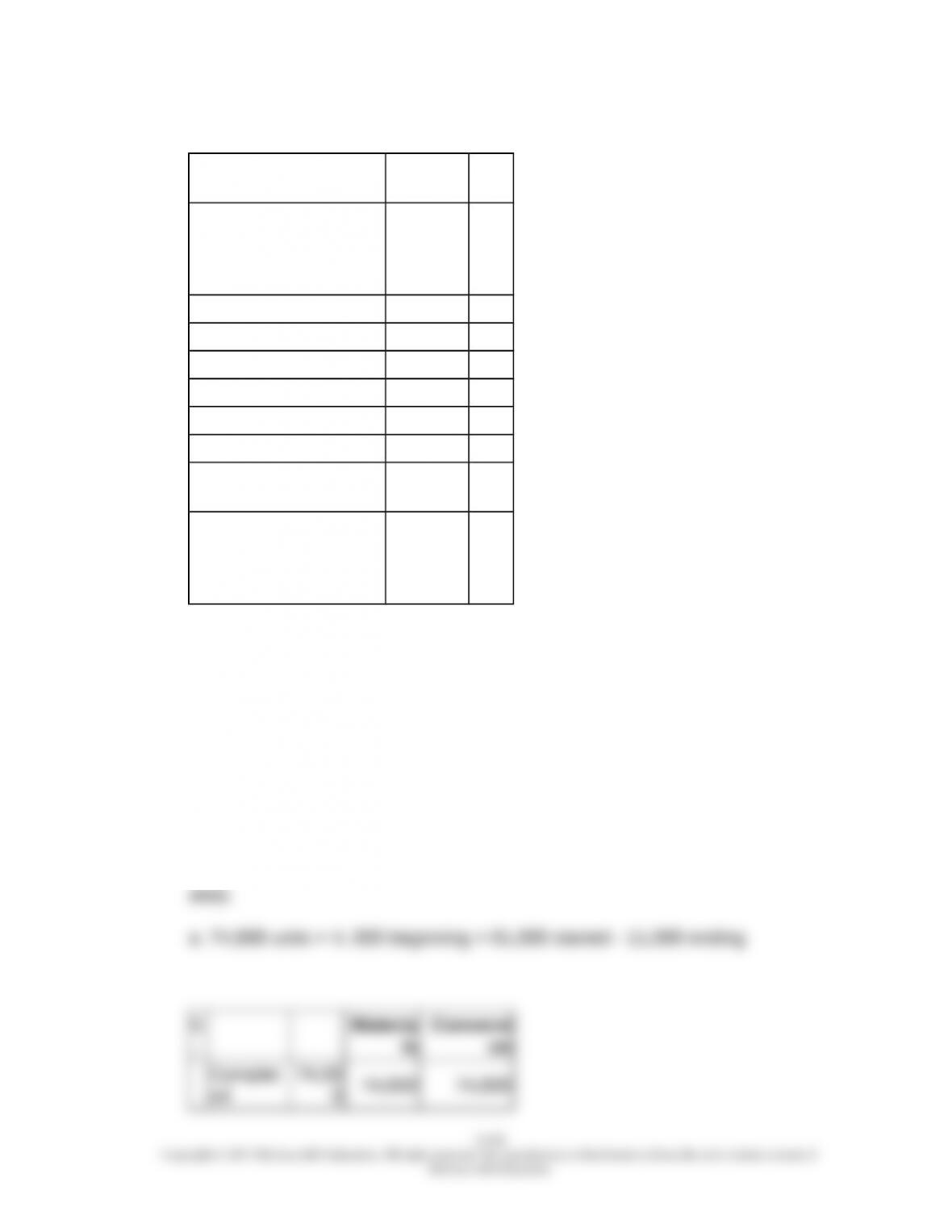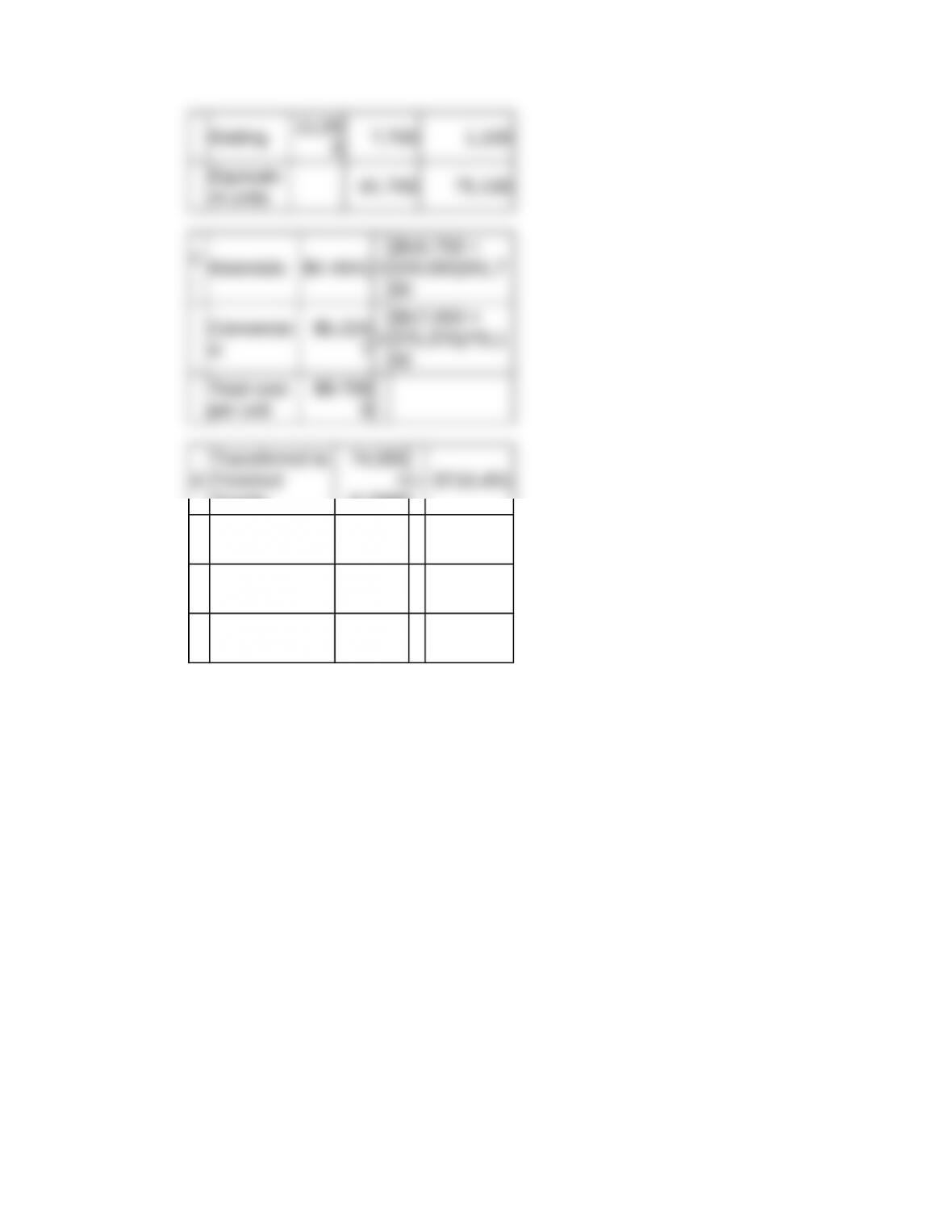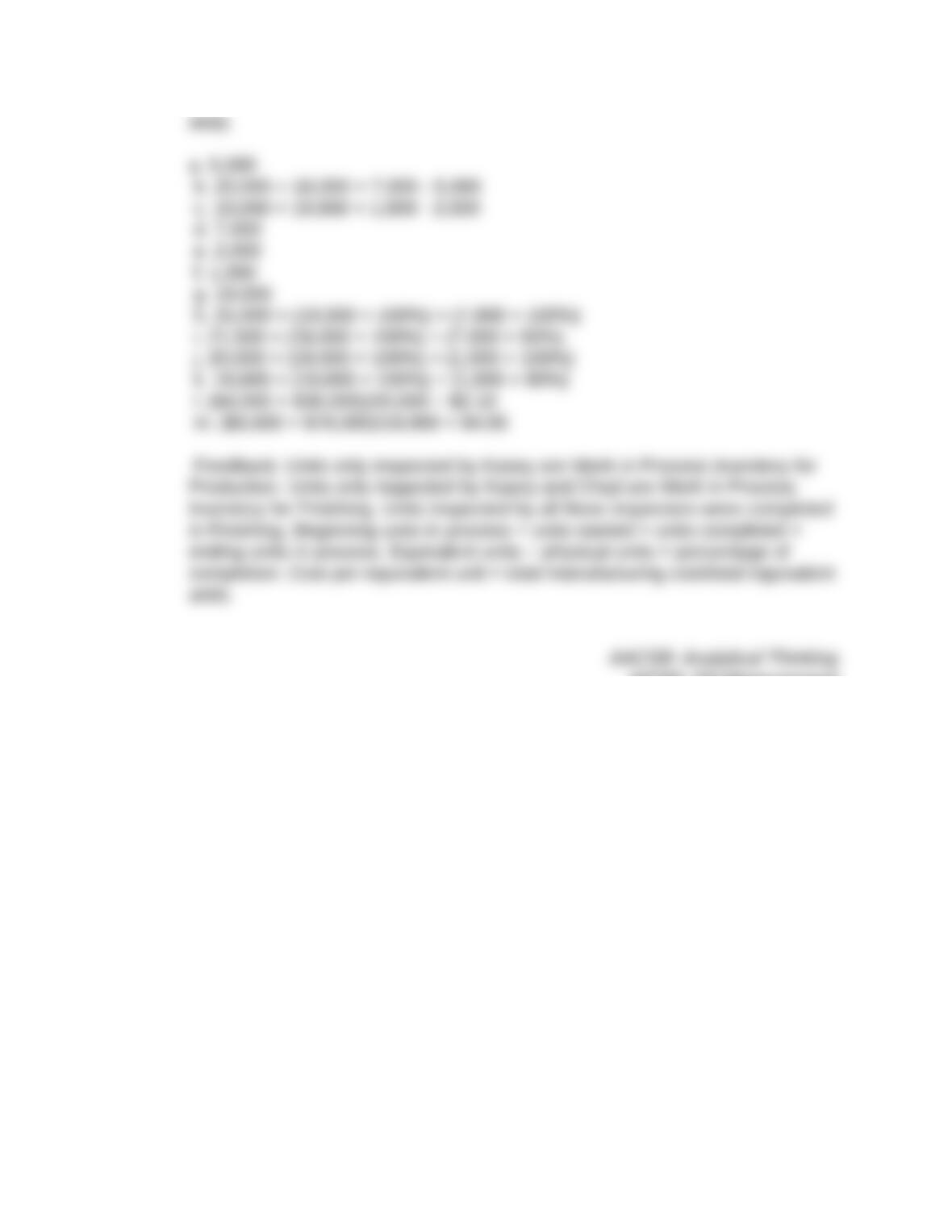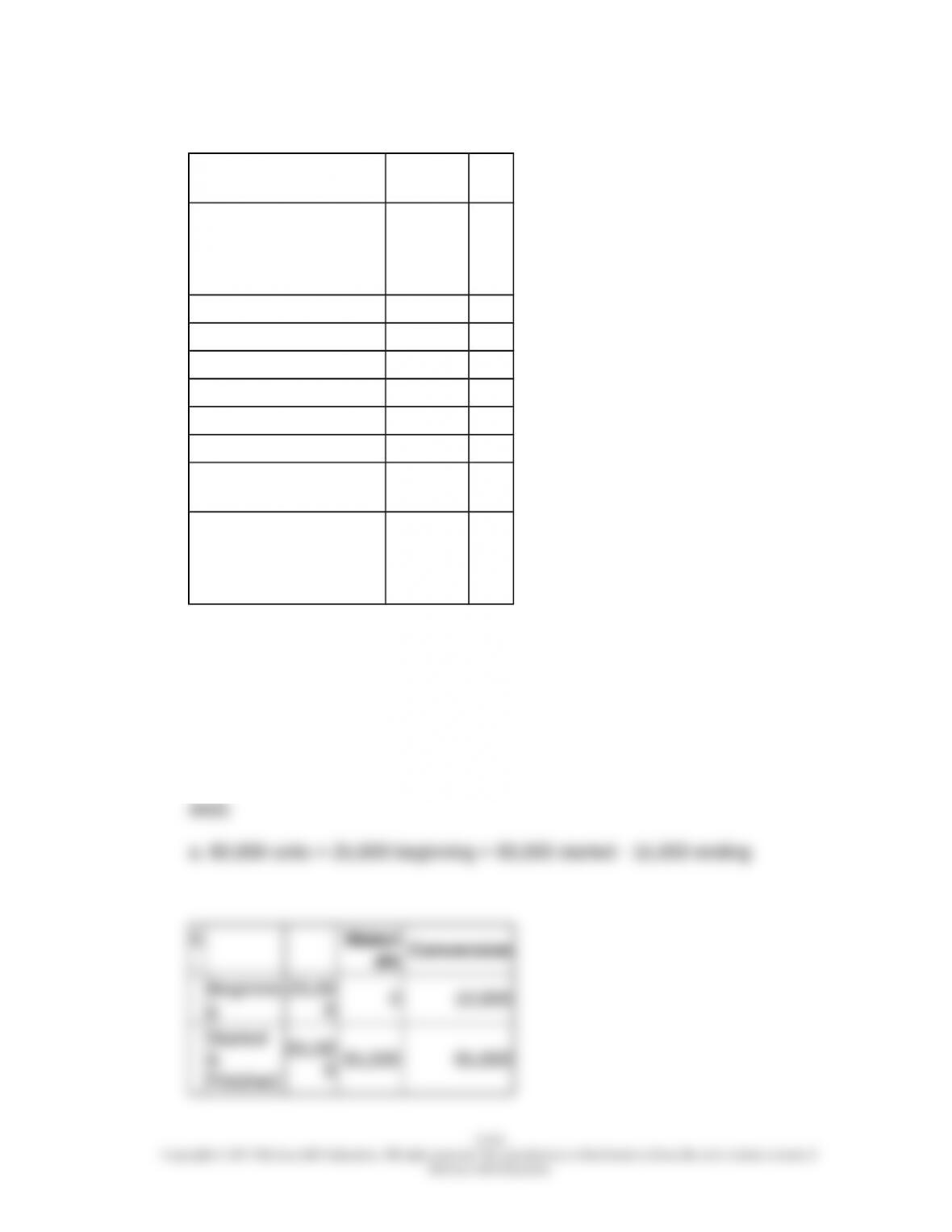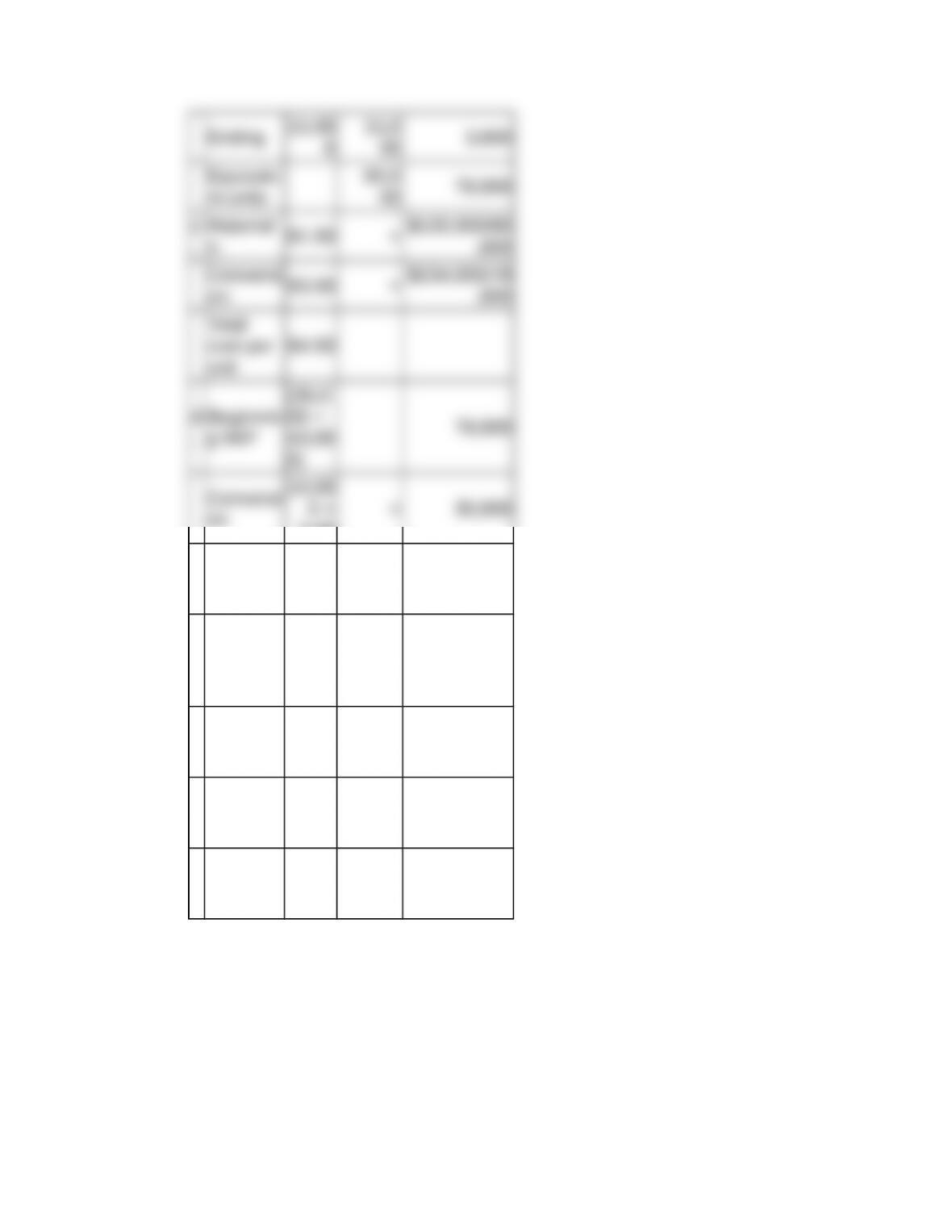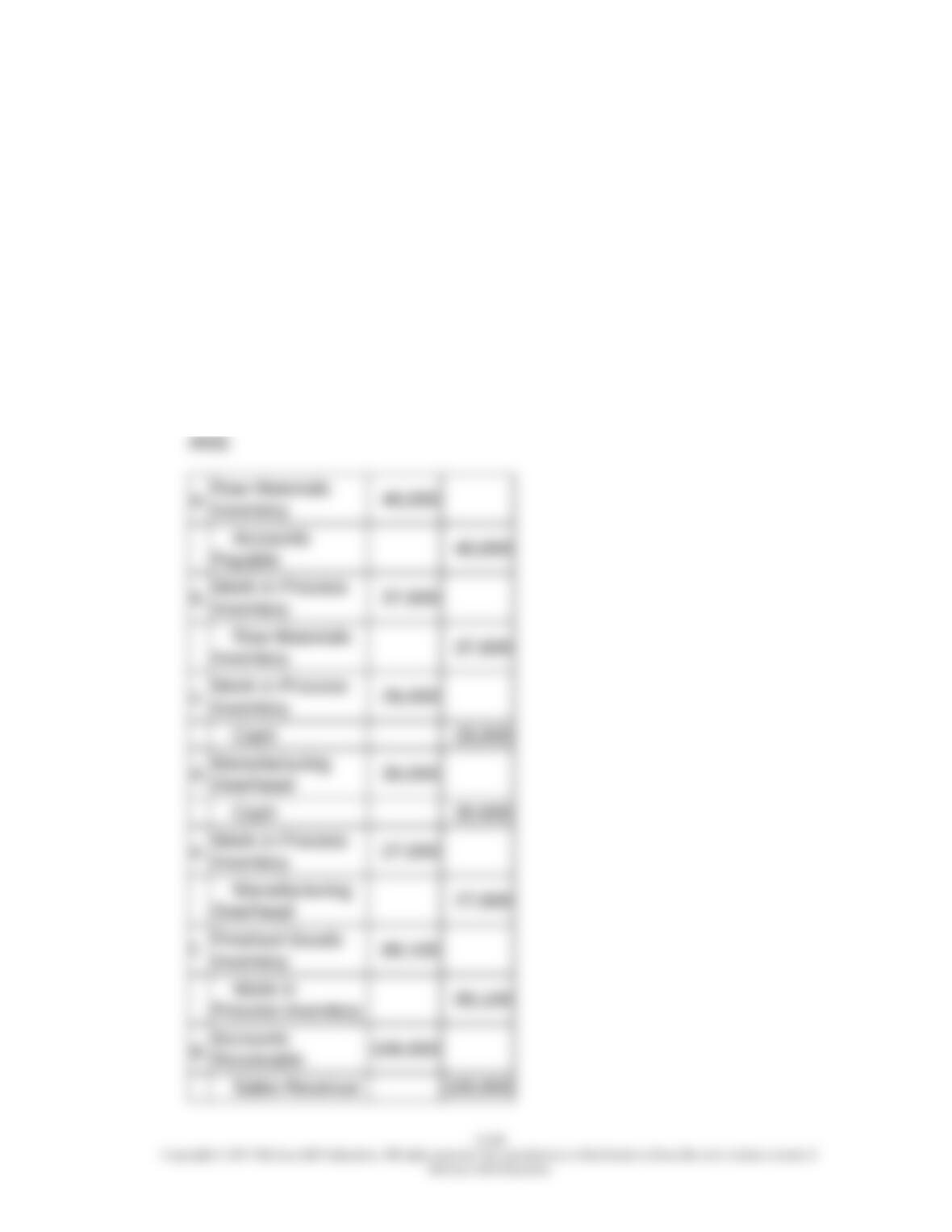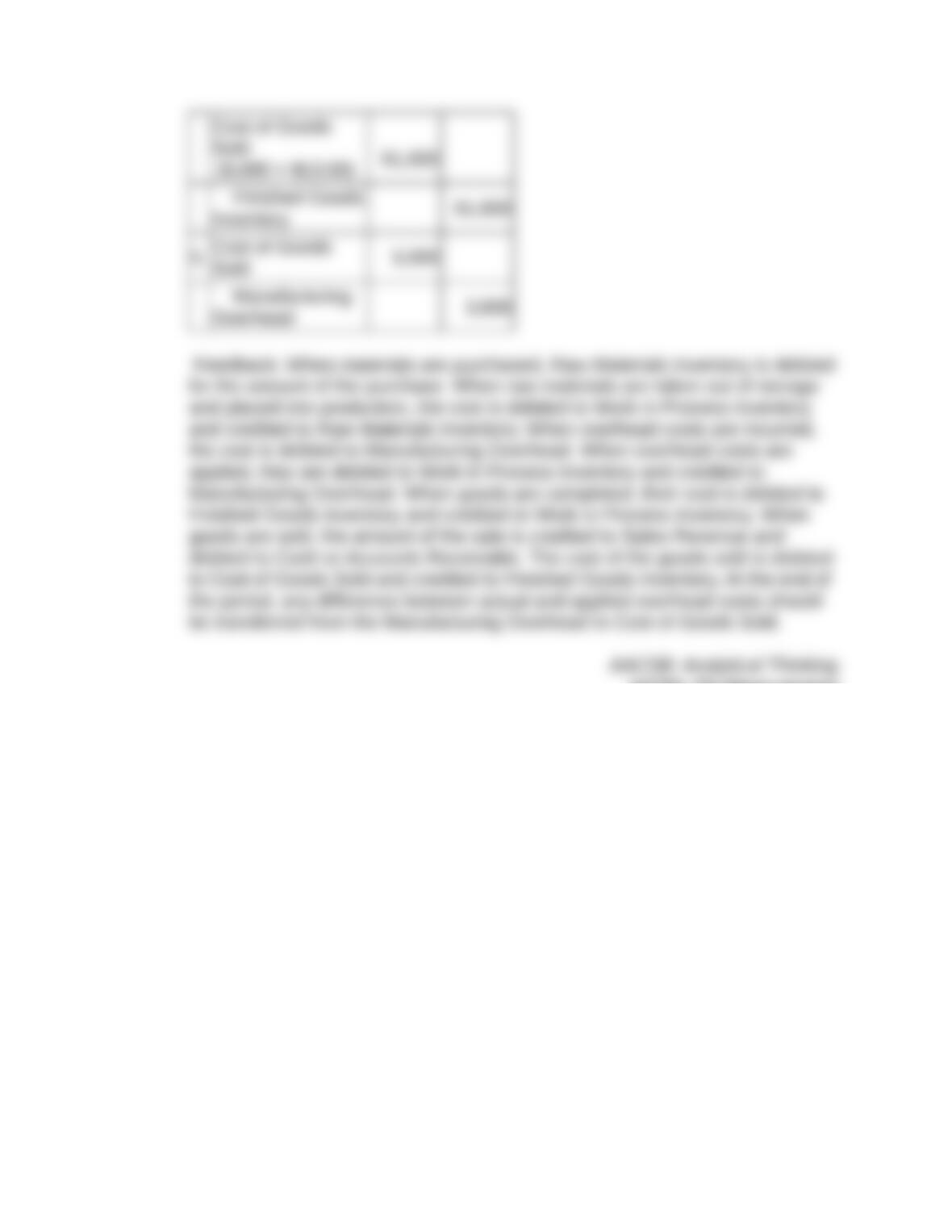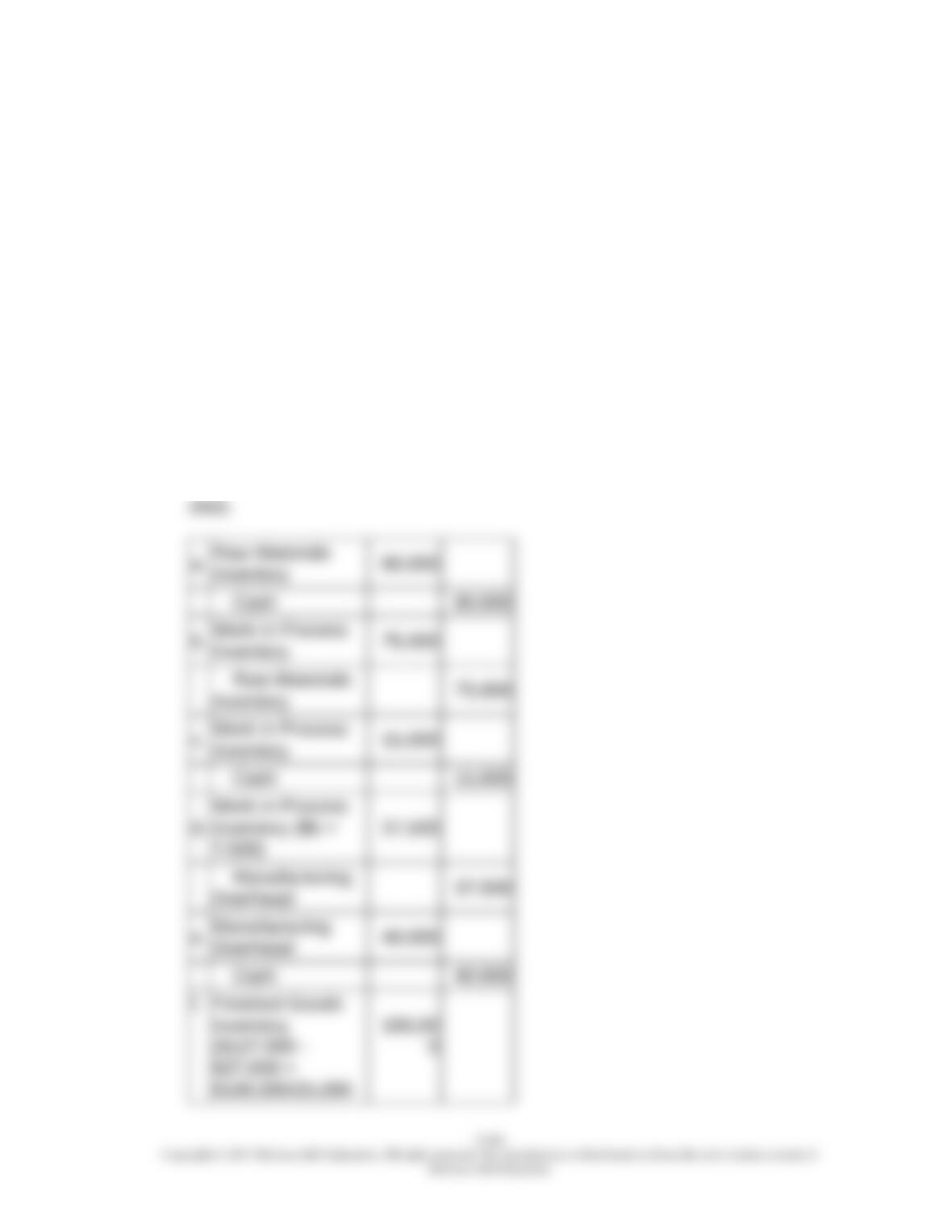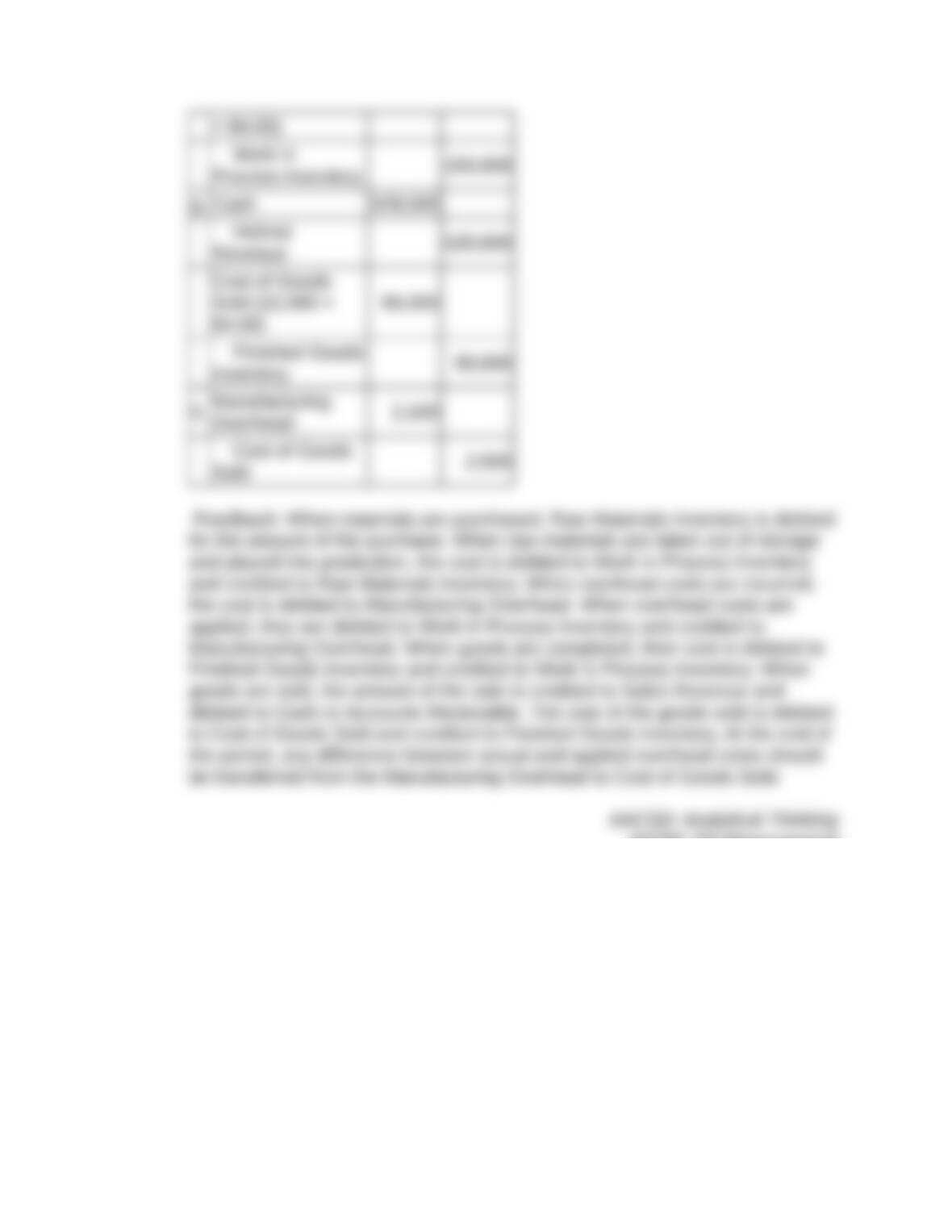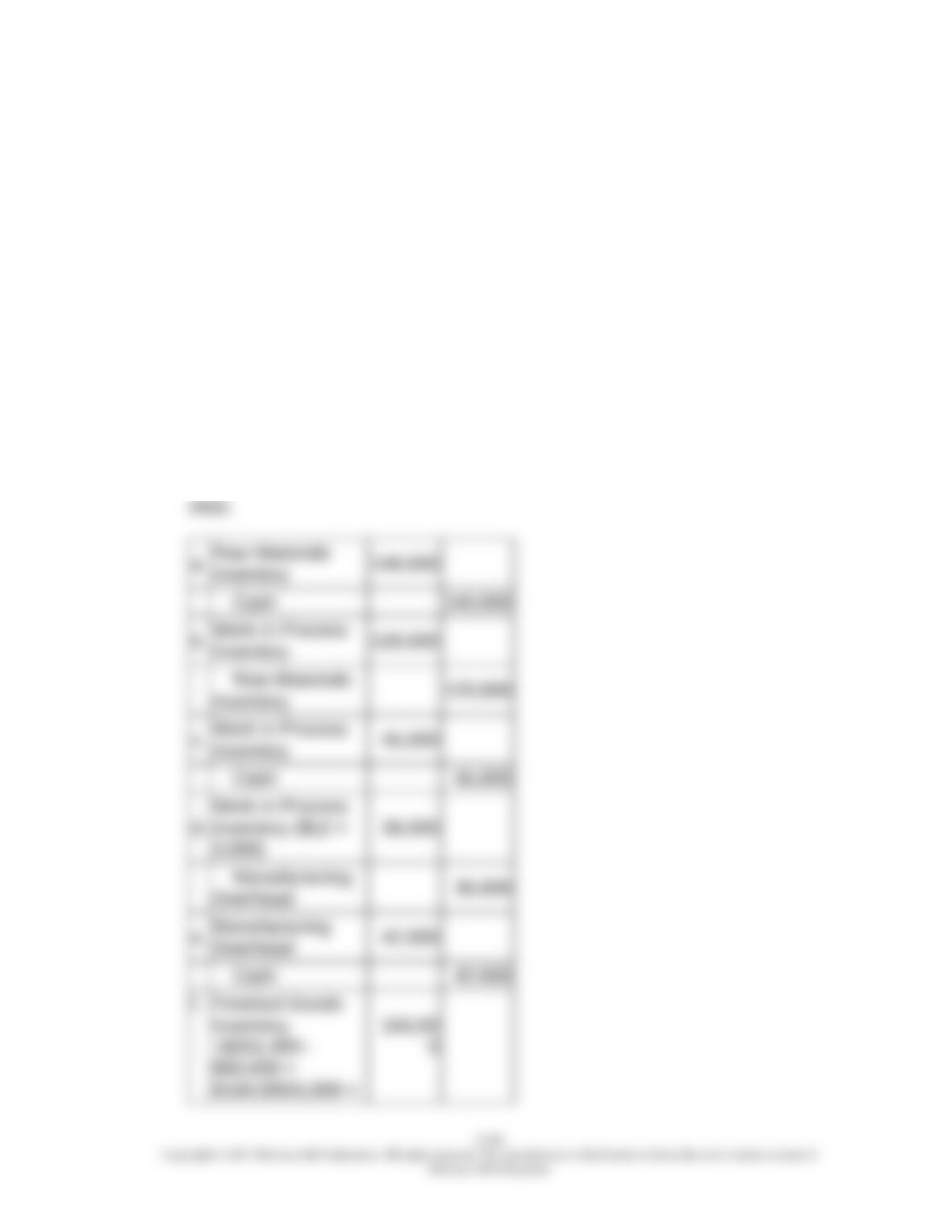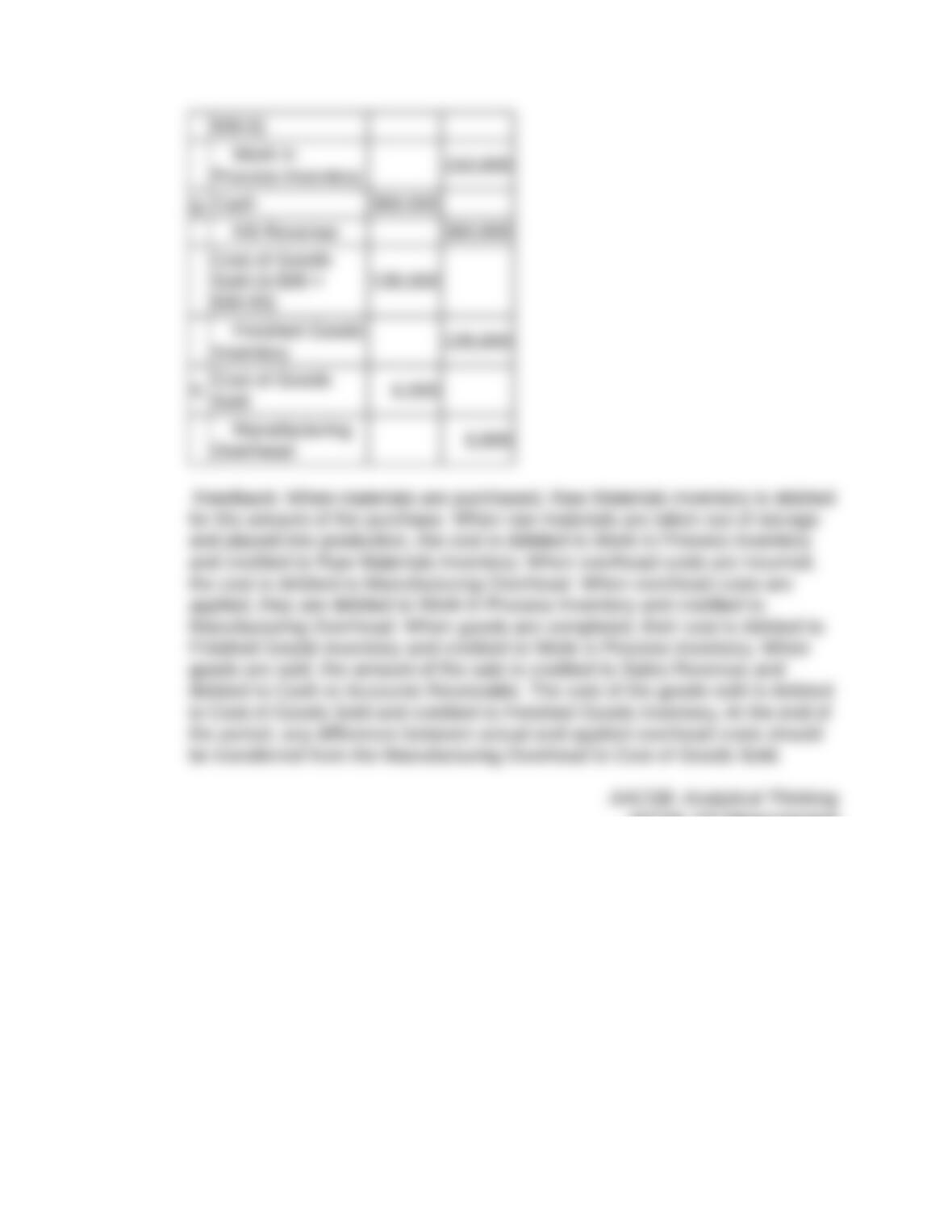125. Hamilton, Inc. manufactures units in two processes: Production and Finishing.
All direct materials are added at the beginning of the Production process, while
conversion costs are incurred evenly throughout the period for both Production
and Finishing. Hamilton employs three inspectors: Kasey, Chad, and Lexi.
Kasey inspects direct materials before they are added to Production (two
pieces of direct materials per unit). Chad inspects units when the Production
process is finished, after which they are immediately transferred to Finishing.
Lexi inspects units at the end of the Finishing process. This period, none of the
materials or units failed inspection. At the beginning of the period, 5,000 units
had only "Inspected by Kasey" tags on them (these units were 70% complete),
and 2,000 units had "Inspected by Kasey" and "Inspected by Chad" tags on
them (these units were 60% complete). At the end of the period, 7,000 units
had only "Inspected by Kasey" tags on them (these units were 50% complete).
1,000 units had only "Inspected by Kasey" and "Inspected by Chad" tags on
them (these units were 90% complete), and 19,000 units had tags from all
three inspectors on them (these units were 100% complete). In the Finishing
Department, Hamilton incurred $38,000 in direct materials costs and $76,000
in conversion costs in the current period. Beginning Work in Process Inventory
for the Finishing Department carried a value of $4,000 in direct materials and
$3,600 in conversion costs.
Required:
Using the weighted average method, determine the number of physical units:
a. in beginning Work in Process in Production during the period.
b. started in Production during the period.
c. transferred from Production to Finishing during the period.
d. in ending Work in Process in Production during the period.
e. in beginning Work in Process in Finishing during the period.
f. in ending Work in Process in Finishing during the period.
g. completed in Finishing during the period.
Using the weighted average method, determine the number of equivalent
units:
h. for direct materials for Production
i. for conversion for Production
j. for direct materials for Finishing
k. for conversion for Finishing
Using the weighted average method, determine the cost per equivalent unit:
l. for direct materials for Finishing
m. for conversion for Finishing
3-132
Copyright © 2017 McGraw-Hill Education. All rights reserved. No reproduction or distribution without the prior written consent of
McGraw-Hill Education.



























































































